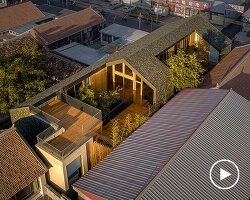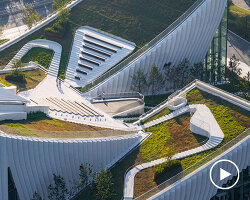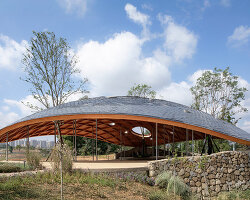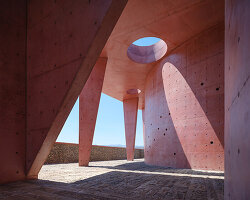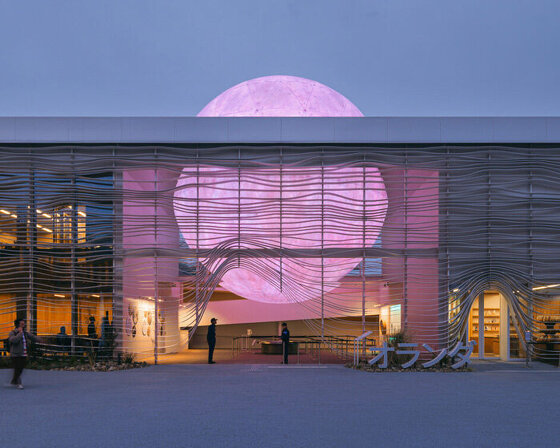‘canton tower’ by information based architecture
amsterdam studio, information based architecture has seen the realization of ‘canton tower’ located in guangzhou, china. the 600 meter tall design was awarded first place in a 2004 competition seeking a new proposal for the plot of land. the structure of the tv and sightseeing tower, which aims to inhabit an intricate design while maintaining a simple overall identity, explores new forms while at the same time challenging current building technologies allowing for a greater degree of complexity and freedom.
 image courtesy of information based architecture
image courtesy of information based architecture
 (left) view from the plaza (right) a view of the inner structural core image courtesy of information based architecture
(left) view from the plaza (right) a view of the inner structural core image courtesy of information based architecture
unlike most skyscrapers that tend to bear male characteristics – angular, simplistic, heavy and based on repetition – the design of the canton tower is defined by its smooth, slender, gracious forms that mimic the figure of a woman.
 detail of the interconnected web image courtesy of information based architecture
detail of the interconnected web image courtesy of information based architecture
the evolutionary nature that lied within the design methodology is directly applied to the production of the structure in its floor plate sizes and orientations. each floor varies in its size, intimacy and exposure and is designed to respond to a specific set of potential users and events. similarly, the density of the structure – a web-like surface created from the intersecting rings, columns and braces – differs over the elevation of the tower. both the floor plates’ sizes and the density are controlled by two ellipses that govern the structure, which together generate a range of conditions. the more open structure at the top generates a transparent environment that attracts programmatic activities like observation, while the denser areas in the ‘waist’ of the building provide a more intimate experience.
 structural core of the tower image courtesy of information based architecture
structural core of the tower image courtesy of information based architecture
the dynamic twisting form is composed of straight shafts that encircle the core of the structure creating the identifying ‘waist’. designed to be as small as possible while still accommodating the elevator shafts and fire escapes, the interior waist spans an area of 15.6 meters.
 looking down from the tower image courtesy of information based architecture
looking down from the tower image courtesy of information based architecture
 sightseeing level image courtesy of information based architecture
sightseeing level image courtesy of information based architecture
 image courtesy of information based architecture
image courtesy of information based architecture
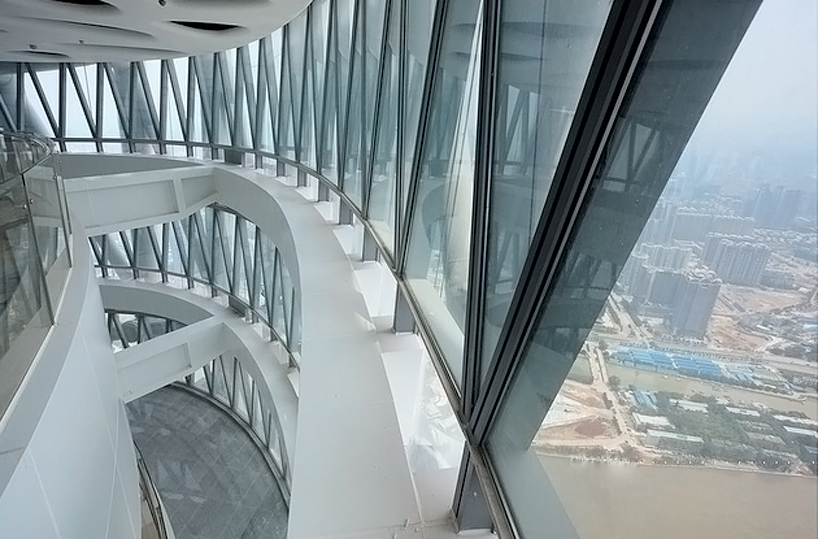 two story rotating restaurant image © qlin zhang
two story rotating restaurant image © qlin zhang
 ‘canton tower’ at night image courtesy of information based architecture
‘canton tower’ at night image courtesy of information based architecture
 sightseeing level during construction image © qlin zhang
sightseeing level during construction image © qlin zhang
 exhibition space during construction image © qlin zhang
exhibition space during construction image © qlin zhang
 floor plan / rotating restaurant image courtesy of information based architecture
floor plan / rotating restaurant image courtesy of information based architecture
 section image courtesy of information based architecture
section image courtesy of information based architecture
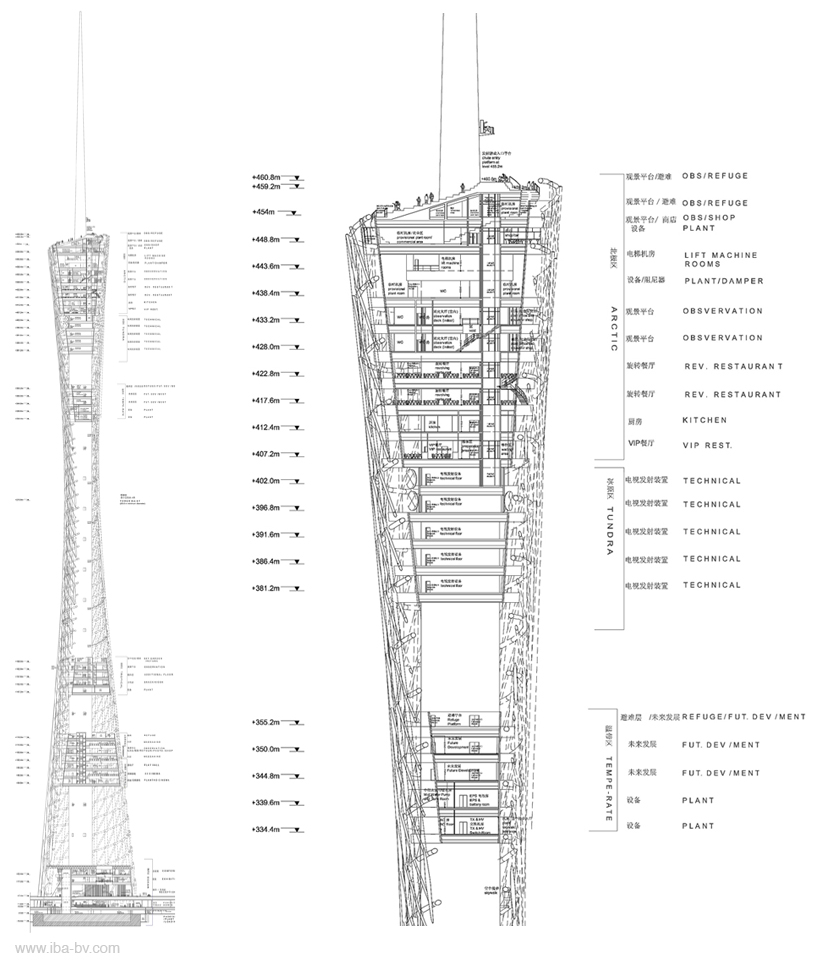 section image courtesy of information based architecture
section image courtesy of information based architecture
 structural metamorphosis image courtesy of information based architecture
structural metamorphosis image courtesy of information based architecture
 diagram of tallest skyscrapers in the world image courtesy of information based architecture
diagram of tallest skyscrapers in the world image courtesy of information based architecture
project info:
architect: information based architecture (mark hemel, barbara kuit) engineer: arup LDI: guangzhou design institute gross floor area: 114.000 square meters height: 600 meters completion date: october 2010



